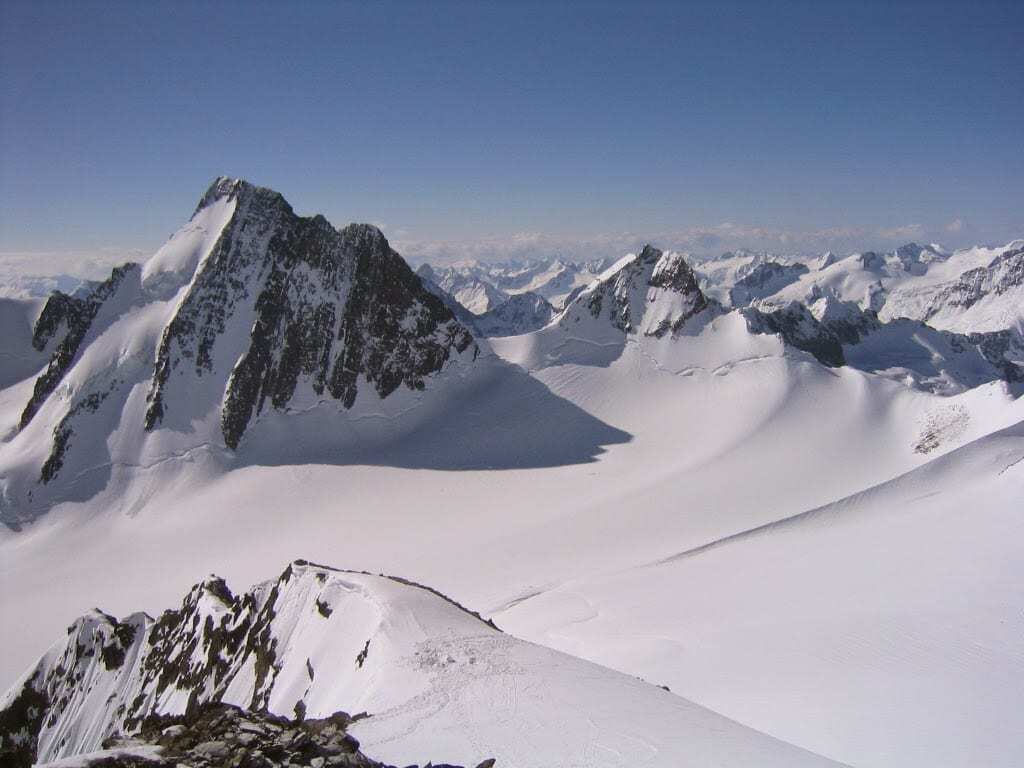
Greg Hill, Adam Campbell, and Andrew McNab just set a new fastest known time on the Bugaboos to Rogers pass ski traverse, completing the entire trip in 53.2 hours. The previous record was set by Troy Jungen, Douglas Sproul, and Jon Walsh in 2005 with a time of eighty hours. Hill’s party crushed the previous record by almost thirty hours. I had an opportunity to chat with Greg Hill after his trip. Continue reading to learn more!
The Bugaboos to Rogers pass ski traverse is regarded as one of the most legendary ski traverses in the world. Located in Western Canada, it spans 84-miles (135-kilometers) and includes almost 36,100-feet (11,000 m) of uphill. Given the perilous obstacles along the way, including glaciers and avalanche-prone slopes, conditions must be just right to attempt this herculean mission. Pioneered by Bill Briggs, Barry Corbet, Sterling Neale, and Bob French back in 1958, the Bugaboos to Rogers pass ski traverse was way ahead of its time. Completing the mission in nine days, their accomplishment would be forever known as one of the most iconic and highly sought-after ski traverses to date.

Below are a few questions I had the opportunity of asking Greg Hill after his trip.
How long have you had your eye on this traverse? Had you attempted it before?
- Hill: “Ever since Doug Sproul, Troy Jungen, and Jon Walsh did it in eighty hours in 2005, I have wondered how long it would take me. I have never attempted it before because it is a very intimidating idea that requires such perfect conditions, teammates, and desire. When I went through my covid reckoning, I realized that this was a challenge that I needed to undertake, one that I would regret if I never made a stab at it.”
In your Facebook post, you mentioned that you trained a bit more than usual for this mission; what did that training involve?
- Hill: “It wasn’t a lot more, but I spent 10-12 days going out solo, getting my pace on and holding it for 1,000m (3,281-feet). Training my mind and body to be able to keep moving. These are not massive days, but max 6-7 hours of moving efficiently and with purpose.”
What was the most memorable part of the trip for you?
- Hill: “Still reeling from this amazing journey. The state of flowing through the mountains, looking back at what we had accomplished, and looking forward to what’s to come.”
What was the hardest part of the trip?
- Hill: “I had not intended to sleep at all, thinking we would mostly walk slowly at night. We ended up bivying twice for four hours to recharge, which for me meant shivering and counting down the minutes to when we could get going again. Minimal gear can equal a very uncomfortable night. In the future, I will have a small sleeping bag and micro bivy; this will actually allow some energy to be regained.”
Were there any particularly scary parts or parts where you took more risk than usual in pursuit of setting a new FKT?
- Hill: “This journey went through so much wild alpine terrain that we really needed the conditions to be perfect, and they really were. Midway through, I didn’t want to talk about how perfect it was, but we were really being handed the ideal conditions. Every slope that could warm up and get scary was cold and tight. Climax col at 2 pm could have been super warm and not passable, but instead, it was cooled and tightened up.”
Have you ever pushed yourself harder than you did on this trip?
- Hill: “I have pushed myself a lot in my life, and this was just another time of digging deep. I had never pushed for more than 24 hours, so I was really curious about how my mind and body would react with a 40+ hour push. I was totally blown away by it all. Watching Andrew crush in a boot pack at thirty hours and skinning 700m (2,297-feet) nonstop at forty hours in was inspiring. It turns out that if there is a goal and it’s worth realizing, I will have endless drive and energy, which is mind-blowing at 45 years old.”
At what point did you and your crew realize that you would set a new FKT for the Bugaboos to Rogers Pass traverse? What was that moment like?
- Hill: “Ha… I knew we were going to set an FKT the second we started. This may sound completely cocky, but given the strength of the team, and the perfect conditions, I knew we had some serious skills. The moment was more in the losing of time. I dreamed of forty hours, and it was well within our sights, and then slowly things took longer than expected, adding in a second shivering sleep at the Malloy hut and then hitting the Bugaboo Snowpatch col at 52 hours. It was such a gratifying moment to know that we had no more climbing left and that we had just gone on the most incredible journey, a trip of a lifetime behind us. One I will forever be excited that I challenged myself with.”
Which big backcountry mission would you like to bag next?
- Hill: “This was such a great journey that I would be lying if I said I wasn’t thinking about my next big challenge! But I am also someone who doesn’t really like talking about things he hasn’t done. So you will just have to wait and see. Dreaming big is key, but realizing those dreams is much more important.”
Follow Greg Hill on Instagram @_greghill_or click here to check him out on Facebook.
